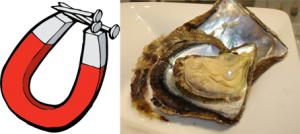 One issue that every arts organization seeking to engage with its communities must address is the “where” of arts activity. Our unconscious assumption is that art needs to take place in spaces specially designed for the form in question: concert halls, theaters, museums. But just as people unfamiliar with the work we present are intimidated by it, many are reticent to enter the venues to which we have grown accustomed.
One issue that every arts organization seeking to engage with its communities must address is the “where” of arts activity. Our unconscious assumption is that art needs to take place in spaces specially designed for the form in question: concert halls, theaters, museums. But just as people unfamiliar with the work we present are intimidated by it, many are reticent to enter the venues to which we have grown accustomed.
Of course there are excellent reasons to design spaces for art: acoustics, sight lines, lighting. All are vital for the best possible presentation. At the same time, our dedicated edifices preclude specific possibilities. I have come to imagine two metaphors to express this. The function of a magnet is to attract things to it. That is the essence of our edifice-focused approach. Its success is directly related to the strength of the magnet. (Yep, “If we build it . . . .”) The “go out” approach–taking art to where people are–is more like seeding oysters with grains of sand. Sometimes you get a pearl. But if there is no sand, no pearl ever forms. (OK. I know this is a cheesy pair of metaphors, but they might be helpful and they may well “stick.”)
In workshops I often use the Ode to Joy “Orchestral Flash Mob” video found here: https://www.youtube.com/watch?feature=player_detailpage&v=kbJcQYVtZMo and ask participants to tell me what they see and then extrapolate lessons for the arts from what they see. It usually excites people because the responses of joy from children and adults are ends we all seek. Recently, I was particularly struck by a participant’s observation that arts organizations needed to “trust the art.” Her point was that great art can speak for itself in extraordinary settings. Certainly there are tradeoffs in degree of focus on the art possible in a public square and the level of detail that can be perceived in non-ideal settings, but at times (not all, or even most of, the time!: magnets and oysters) such options can be the beginning of deepened relationships with both individuals and communities.
Let the pearls begin.
Engage!
Doug
Magnet: openclipart.org by Johnny_automatic (public domain)
Oyster with pearl: ![]() Some rights reserved by Anna’s Photos
Some rights reserved by Anna’s Photos

[…] the spaces of Library Square and Washington Square so that art fans can unite, the metaphors of magnets and oysters, as Doug Borwick, a long-time arts administrator explains in his Arts Journal blog Engaging […]